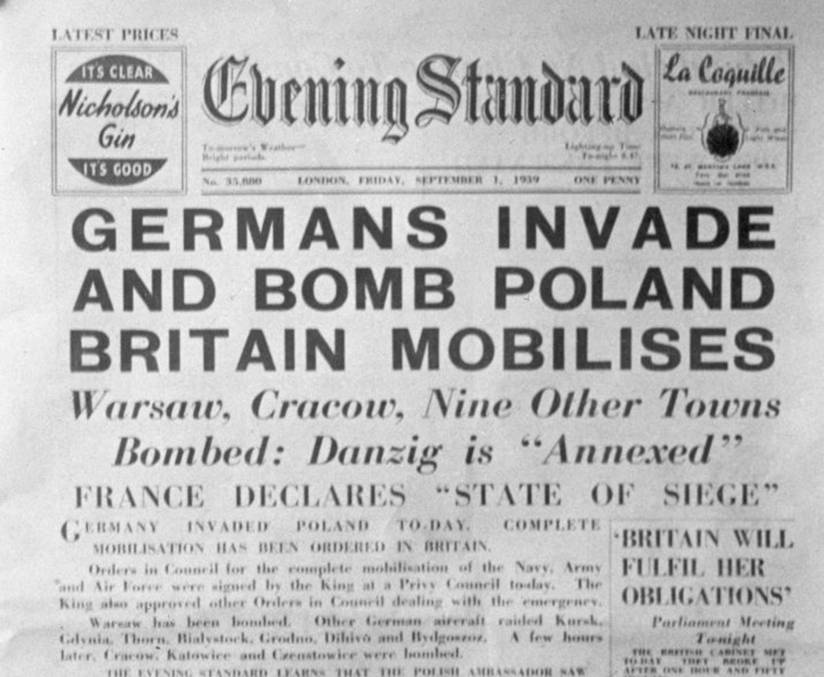
In 1929, President Herbert Hoover had the War Department conduct an investigation to determine which of its needs and methods should “reconsider our whole army program” and this led to a 165-page report. But before the report was completed, the stock market crashed. 

Any hope of increasing Army spending was doomed for the foreseeable future.
The report didn’t discuss the economy though. It presented a relationship between a nation’s overall state of military preparedness and the amount of world respect that nation held. This influences the success with which that nation could utilize foreign policies for peace.
The report considered the geopolitical situations around the world and noted differences between nations, including the existence in the US of “certain clearly defined national policies conflicting with those of other countries.”
The report also examined the state of the @USArmy with regard to personnel and materiel, and it explained the reasons for why the Army was in its then-current state, along with suggestions for fixing it. Two proposals were made:
The first would increase the Regular Army to 179,000 soldiers, the National Guard to 250,000 soldiers, and the Officers’ Reserve Corps to 116,000 with another 6,000 added yearly from the Reserve Officers’ Training Corps (ROTC). @ArmyROTC @CG_ArmyROTC 

This first proposal also included 37,500 each year from the Citizens’ Military Training Camp. This was a program that offered summer military training to male citizens who would receive the basic training independent of any obligation to serve on active duty. 



That report acknowledged shortages in guns and ammunition, in aircraft and aircraft equipment, and in clothing items and tents. All of which were noticeable, but some were especially noticeable in non-active-duty components.
The second proposed plan described an Army smaller than the first plan, but it was insufficient for anticipated Army needs so that proposal was simply rejected.
Funny enough, what the Army succeeded in creating years later would be much closer to Plan II than Plan I, and even smaller than both.
The lowest level of Army effectiveness since WWI was reached in 1933. At the time, the @USArmy ranked 17th among world armies, as estimated by then-Chief of Staff GEN MacArthur.
The National Defense Act of 1920 authorized a standing US Army force of 280,000 enlisted during peacetime. In 1933, the US Army had 14,000 officers and 122,000 enlisted.👀
The basic concept of the National Defense Act of 1920 was to have an established small force (280,000) that is capable of rapid and efficient expansion when needed. Unfortunately, that doesn’t just happen. The conditions have to be set to facilitate it.
When the Army dropped below 125,000 it became nearly impossible to maintain the number of units it had originally accounted for, so many were deactivated. This would later require the complete recreation of corps and field army units once the rebuilding began.
The goal was a lean, organized, professional military force capable of scientific expansion on short notice.
What we got was an emaciated organization incapable of expanding and nowhere near ready for employment in a conflict. The situation wasn’t entirely hopeless though.
GEN MacArthur, as Chief of Staff in 1933, saw the mobilization process as stemming from three possible starting points: 1) a starting strength of 118,000 soldiers, 2) a hoped-for 165,000, and 3) with the 280,000 authorized by the National Defense Act.
MacArthur determined that mobilization from (1) would be impossible in less than 6 months. The Army only had 4 divisions and all of them were incomplete. There was no supporting force. There were no cadres for expansion to new divisions. This one wouldn’t work. 

Mobilizing from (2) would not allow for an immediately available force, but it would allow the creation of a more rounded military with efficient expansion, assigning one division and 5 skeleton brigades to each of four armies.
Mobilizing from (3) specified that the authorized peacetime strength of 280,000 would have been in place since the 1920s. This plan was not expected to be a possibility, it was presented to balance (1) and (2).
MacArthur pushed for what he thought he could achieve and opted to make (2) a reality. In 1938, the @USArmy had 170,000 enlisted soldiers and this was a result of MacArthur making it happen. 

His successor, General Malin Craig, also pushed for what he thought he could get. And in 1939, GEN Craig pushed for an increase of 40,000 soldiers. GEN George C. Marshall was his Deputy Chief of Staff at the time. Marshall went to Congress to fight for the increase. 



So, this Mobilization Plan II was essentially what the @USArmy had in place until 1940, when we created a new plan. The mindset had been that we wouldn’t need offensive strength and capabilities because if we were involved in another war, we would be on defense only.
The Initial Protective Force (IPF) made up of the Regular @USArmy and @USNationalGuard from 1933-1940 focused on 165,000 enlisted soldiers for the Regular Army and 235,0000 in the National Guard, for a total IPF of 400,000.
And these were the numbers used by supply branches to make their calculations.
The Initial Protective Force was planned for emergency defense. The Protective Mobilization Plan (PMP) would be another story.
If you're just tuning in or you've missed any of the previous threads, you can find them all saved on this account under ⚡️Moments or with this direct link twitter.com/i/events/13642…
• • •
Missing some Tweet in this thread? You can try to
force a refresh


























